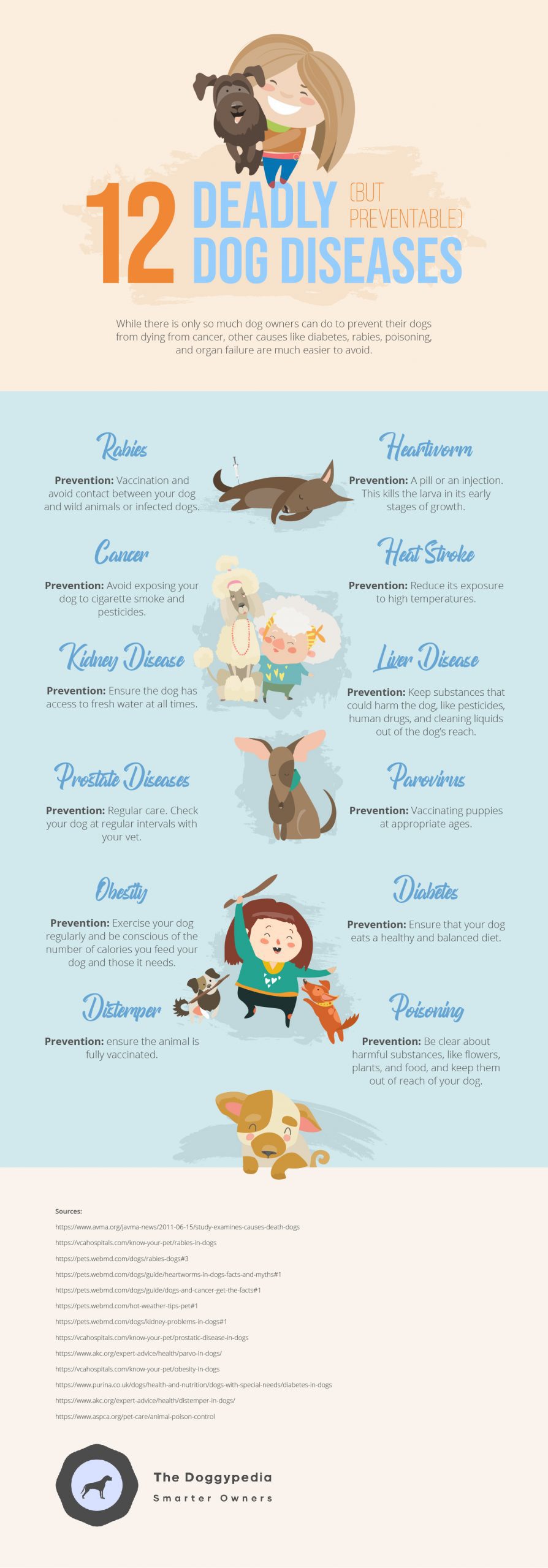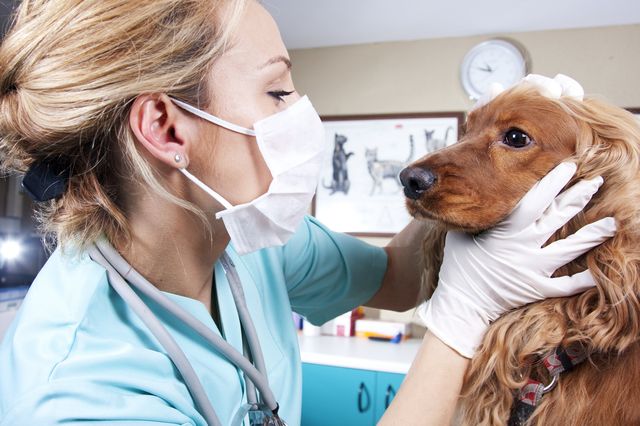
Prevention of dog diseases dangerous to humans
Unfortunately, dogs are prone to many dangerous diseases. You need to take into account that some of them can be transmitted to people, so it is better to warn them.
Contents
Ways of infecting dogs with dangerous diseases
Viruses and bacteria can enter the dog’s body through food, ammunition, bedding, as well as airborne droplets. The risk group is made up of small animals with weak immunity, older dogs, and pets with weakened immunity.
Predisposing factors: poor living conditions, improper care, violation of transportation rules, excessive physical exertion, prolonged hypothermia, stress.
Dogs of all breeds and ages are susceptible to viral or parasitic diseases, so it is important to monitor the condition of the pet, take preventive measures and seek help in time.
Diseases transmitted from dogs to humans are called zooanthroponoses. These are tuberculosis, rabies, toxoplasmosis, leptospirosis, chlamydia, helminthiases, acute echinococcosis, lichen and other dermatological diseases.
Rabies
Rabies is a viral disease resulting from the bite of an infected animal. It is characterized by severe damage to the nervous system, leading to death.
 Photo: google.com
Photo: google.com
The method of infection is the ingestion of the saliva of a sick animal on the affected area of uXNUMXbuXNUMXbthe skin.
Manifestations in dogs and humans
Symptoms only appear when the virus has spread throughout the body. Most often, the latent (incubation) period is 10 to 14 days, but in humans it can last up to a year.
PreventionCurrently, there is no cure for rabies, but a vaccine has been developed that will prevent infection. Vaccination is mandatory, carried out once a year.
chlamydia
Chlamydia is a dangerous infectious disease caused by pathogenic microorganisms of the genus Chlamydia. It is transmitted from a dog to a person by airborne droplets. The danger lies in the latent (hidden) course of the disease.
Manifestations in dogsRhinitis, bronchitis, pathologies of pregnancy and childbirth. Antibiotic treatment is prescribed. Prevention for manWashing hands after contact with a dog.
Leptospirosis
Leptospirosis is an acute disease of mammals, including humans. It is transmitted through contact with the urine of an infected dog or through contaminated objects. Leptospira penetrate through mucous membranes or damaged skin. The disease leads to damage to the liver, kidneys and other organs. The diagnosis is confirmed by a blood test. Symptoms in dogsLethargy, refusal to feed, fever, vomiting, diarrhea, sometimes muscle soreness. Prevention for the dog
Vaccination (preferably once every 1-8 months).
Restriction of swimming in suspicious reservoirs.
Destruction of rodents.
Prevention for man
Grab a dog.
If your dog is sick, start treatment as soon as possible.
Observe personal hygiene when dealing with a dog.
The main thing is not to panic, leptospirosis is being treated now.
Dermatomycosis (ringworm)
Dermatomycosis is the general name for diseases characterized by damage to the coat and skin. The most common pathogens are two types of fungi (trichophytosis and microsporum). Dogs become infected from each other and from other animals through direct contact. A person can also become infected.
Symptoms in dogsThe appearance of an irregular shape of rounded bald areas (most often on the muzzle and ears). Prevention for dogs and humansVaccination of the dog. Today, microsporia is easily treated with antifungal diseases.
Photo: google.com
Tuberculosis
Tuberculosis is an infectious disease of many animals. The causative agent is mycobacterium. This pathogen multiplies for a long time, therefore, the disease most often occurs in a chronic form, with exacerbations during a decrease in immunity.
The first symptoms appear 14-40 days after infection. The dog weakens, the temperature rises, the submandibular lymph nodes are enlarged and hard, after eating there may be vomiting, the pet is very thin, the coat is disheveled. There is shortness of breath, there is a cough with sputum.
Unfortunately, this disease is most often untreatable, and usually veterinarians recommend euthanizing the dog.
Parvovirus enteritis
Parvovirus enteritis is a highly contagious disease characterized mainly by acute hemorrhagic enteritis, dehydration, myocarditis, and leukopenia. The disease is transmitted by contact of sick animals with healthy ones. The mortality rate ranges from 1 to 10%.
Symptoms in a dog
Exhausting vomiting, diarrhea, dehydration, rapid weight loss.
If the violations are irreversible, the dog dies on the 2nd – 4th day. With a longer course of the disease and proper treatment, the chances of recovery increase.
With a hyperacute form, mortality can reach 80 – 95% (group content) or 50 – 60% (individual content). In acute form: 30 – 50% and 20 – 30%, respectively.
The main forms of parvovirus enteritis
| Form | Clinical signs |
| Cardiac (myocarditis) | It is observed mainly in puppies 2 – 8 weeks. |
| Intestinal (intestinal) | Occurs in acute or subacute form. Symptoms: indomitable vomiting for several days (80% of cases), complete refusal of water and food. |
| Mixed (combined) | Various lesions of the digestive, cardiovascular and respiratory systems. Clinical signs are varied. |
If an adult dog gets sick, it usually develops long-term immunity. But a puppy who has been ill (up to 3 months old) may develop an immunodeficiency state.






